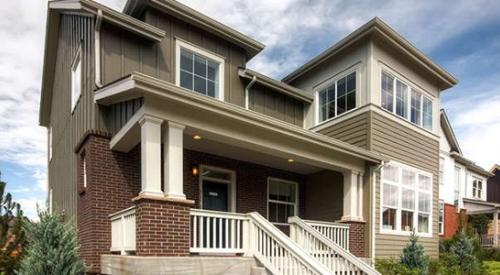Words matter—a lot. So why do we often ignore this when promoting energy-efficient homes? We’ve focused on selling energy efficiency and associated technologies so enthusiastically that we’ve missed a crucial fact: Buyers want explanations of how their investment in energy efficiency will improve comfort. In addition, they’re more educated and informed about the sales process than ever before. To respond effectively, we need to address their needs with a new level of sophistication. That includes the language we use (Image: Activedia/Pixabay).
A classic example is decades of failure in the energy industry trying to engage American homeowner interest in conducting an “energy audit.” Name one individual who wants to be audited. I can’t. An audit strikes fear in the hearts of most people, knowing it represents a process of detailed scrutiny that involves many hours of work and can lead to significant cost or penalty. Why choose a name that connotes such a negative reaction to sell an important and potentially profitable service?
Instead, how about calling it a “home energy check-up”? We take our children (and ourselves) to the doctor for annual check-ups because we understand how important it is to protect their health. We bring our cars in for routine check-ups with the mechanic, knowing how important it is to keep one of our largest assets fully operational. So why don’t we leverage the same concept with homes, which are often the most expensive asset we own? It’s much easier to hear “Let’s do a check-up on your home to make sure it’s performing as well as it should and potentially avoid costly utility bills and problems downstream,” than “I’m here to audit your home.”
Conveying Benefits
When selling energy efficiency, we need powerful words—terms that convey energy-saving benefits in a compelling way. One example is the commonly used term “payback.” Can you name a consumer experience where we make spending choices based on payback? There isn’t one—there’s no frame of reference. Yet when encouraging consumers to make their home more energy efficient, we use the term “payback.” Why wouldn’t American homebuyers want to spend less for a better house that’s more comfortable, durable, healthy, and safe? In existing homes without long-term financing available, we can promote the impressive after-tax reliable rate-of-return on energy-efficiency improvements. As opposed to payback, we should be asking homeowners why they don’t want the automatic 20 percent return after taxes that’s possible with many energy-efficiency upgrades and far superior to other, more traditional investments?”
Useful Sales Tools
When it comes to the full array of building science technologies and best practices for our homes, we can apply the same philosophy of power words by examining each specific measure. Almost all of the terms have been named based on their technical function rather than the improved consumer experience. Why would we concede such a powerful sales advantage? Consider these examples:
• A vent in a wall between a bedroom and hall is called a “transfer grille?” Why? From a technical perspective, the grille allows the transfer of air from a bedroom to a central HVAC return in a hallway. But now, think of the consumer experience. A transfer grille enables occupants to use their bedrooms with the doors closed and be assured of full comfort because it enables dehumidified, heated, or cooled air to flow freely. Thus we suggest using the term, “comfort vent” based on that positive consumer experience.
• Ventilation systems are hard to sell because consumers have no context for why they need one and why they would want to pay for it. In contrast, everyone wants fresh air. When it feels stuffy in our homes, we open a window or go outside. So, doesn’t it make sense to shift the terminology from the technical function of a “ventilation system,” to the experience of a “fresh-air system?”
• Low-E windows is a difficult term for consumers; there’s no apparent value connection because the word “low-E” refers to the complicated technical function of low-emissivity coatings. What about “enhanced-comfort window” for a buyer who has lived in homes that were too cold or hot; “quiet window” for a buyer concerned about noise; “high-efficiency window” for a buyer concerned about high utility bills; “advanced window technology” for a buyer who is tech-savvy; or “sun-protection window” for a buyer concerned about the sun fading interior furnishings.
Zero Energy-Ready Homes
Using more effective terminology applies to homes that produce as much or more energy than they consume, with a small renewable energy system. There’s a contingent that wants to call them “net-zero energy homes” or “zero net-energy homes.” This is based on the understanding that these homes are not truly zero-energy homes, but that over the course of a year net out at zero, producing more energy than they need in some months and less than they need in other months. Advocates of these terms are focused on the engineering accuracy behind it. But “net” is not a power word. Instead, at the Department of Energy, we got rid of “net” and added the term “ready.”
Why? If the home is very energy efficient but isn’t equipped with a renewable energy system at the time of sale, “ready” means that renewables can be added at any time to yield a zero-energy outcome. Even if the home is equipped with renewables, “ready” is still an important modifier; there are numerous factors that may contribute to an energy bill, even with a renewable energy system—extreme weather, many occupants, an under-sized energy system, excessive equipment, beyond-normal use, and significant fees imposed by the utility company for selling renewable power to the grid.
It’s much harder to sell technical functions than it is to sell customer experience. To that end, the Department of Energy has developed a special new tool in the Building America Solution Center called the Building Science Translator. This tool provides a new language for building science terms based on experience rather than jargon and helps builders create customized sales materials. The new language is a powerful first step in selling the value of high performance, particularly if we as home builders work together with the Department of Energy to continuously improve how we speak about efficiency.












